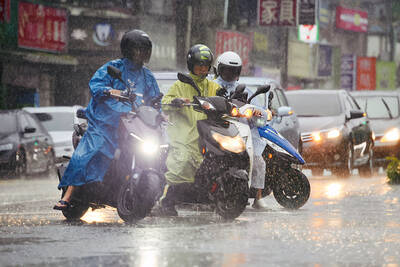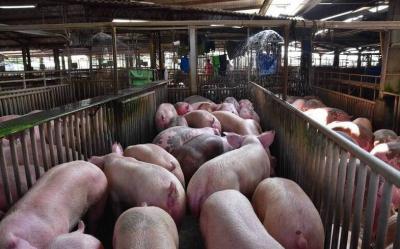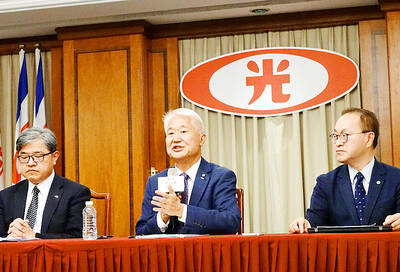Business concerns in the West often make money by patenting their own medicines and agricultural products based on the traditional knowledge of indigenous peoples.
A US company has patented a yellow bean grown for thousands of years in South America, while pesticides using substances from the Indian neem tree have been sold by transnational corporations in Europe and elsewhere.
A firm in Germany is marketing a cure for respiratory ailments based on extracts from the African Pelargonium plant genus.
Some of these patents have been returned after years of litigation, but that is not enough for some participants at the UN conference on biodiversity, which takes place in Bonn, Germany, tomorrow through May 30.
The UN gathering wants to make traditional knowledge less vulnerable to unauthorized use and ensure that adequate financial compensation is made to the communities that possess such knowledge.
“The foundation stone has to be laid so that we can come to a concrete agreement by 2010,” said Konrad Uebelhoer, biodiversity director at the German Society for Technical Cooperation (GTZ).
One of the main demands, he said, is that business and researchers be required to seek permission in the individual countries before they start searching for medicinal plants or genes.
The local communities should also be consulted in the application of traditional knowledge, which is based on practice and has often been passed on through many generations.
“It is necessary to have a clear formula for profit-sharing,” Uebelhoer said.
This could also include transferring the technology used to identify the active ingredients to the countries of origin, he said.
About 190 nations have signed up to the UN Convention on Biological Diversity. The only industrialized nation that has not joined is the US.
Washington does not object to the first two goals of the convention — the protection of biodiversity and its sustainable development, Uebelhoer said.
It is the third aim of justly distributing the profits from the use of biological agents that has run into opposition from the powerful US pharmaceutical industry, he said.
Andreas Drews, who also works for the GTZ, said those applying for patents were not required to state where the biological ingredients come from, leading to an undetermined amount of biopiracy.
He wants changes made to the way patents are granted in order to stop this practice.
“We demand a formal disclosure of where the resources come from before biological ingredients, novel food and cosmetics can be registered,” he said.
“Novel food” is the term used for new foodstuffs, in particular genetically modified foods.
This is already the case in Norway, said Drews, whose organization is responsible for carrying out projects authorized by the German Ministry for Economic Cooperation and Development.
There has already been some success in ensuring that some of the wealth gained from derivatives of traditional knowledge is returned to the holders of that knowledge.
Among the beneficiaries are the San people in southern Africa, said Frank Barsch, an expert on the protection of species at the environmental organization WWF.
These hunter-gatherers chew the cactus-like hoodia plant to still hunger and thirst pangs on their long journeys through the inhospitable Kalahari desert.
The South African Council for Scientific and Industrial Research (CSIR) isolated the appetite suppressant P57 contained in the plant and patented it as a dietary supplement. Dutch-based Unilever is now developing the product.
After much protest, CSIR signed a deal with the San in 2003 on sharing the potential benefits of the product, which is being touted as a potential cure for obesity.
Under the deal, to which Unilever is expected to contribute from next year, San communities will be able to access royalties from a trust fund to finance social projects.

The combined effect of the monsoon, the outer rim of Typhoon Fengshen and a low-pressure system is expected to bring significant rainfall this week to various parts of the nation, the Central Weather Administration (CWA) said. The heaviest rain is expected to occur today and tomorrow, with torrential rain expected in Keelung’s north coast, Yilan and the mountainous regions of Taipei and New Taipei City, the CWA said. Rivers could rise rapidly, and residents should stay away from riverbanks and avoid going to the mountains or engaging in water activities, it said. Scattered showers are expected today in central and

COOPERATION: Taiwan is aligning closely with US strategic objectives on various matters, including China’s rare earths restrictions, the Ministry of Foreign Affairs said Taiwan could deal with China’s tightened export controls on rare earth metals by turning to “urban mining,” a researcher said yesterday. Rare earth metals, which are used in semiconductors and other electronic components, could be recovered from industrial or electronic waste to reduce reliance on imports, National Cheng Kung University Department of Resources Engineering professor Lee Cheng-han (李政翰) said. Despite their name, rare earth elements are not actually rare — their abundance in the Earth’s crust is relatively high, but they are dispersed, making extraction and refining energy-intensive and environmentally damaging, he said, adding that many countries have opted to

African swine fever was confirmed at a pig farm in Taichung, the Ministry of Agriculture said today, prompting a five-day nationwide ban on transporting and slaughtering pigs, and marking the loss of Taiwan’s status as the only Asian nation free of all three major swine diseases. The ministry held a news conference today confirming that the virus was detected at a farm in Wuci District (梧棲) yesterday evening. Authorities preemptively culled 195 pigs at the farm at about 3am and disinfected the entire site to prevent the disease from spreading, the ministry said. Authorities also set up a 3km-radius control zone

CONCESSION: A Shin Kong official said that the firm was ‘willing to contribute’ to the nation, as the move would enable Nvidia Crop to build its headquarters in Taiwan Shin Kong Life Insurance Co (新光人壽) yesterday said it would relinquish land-use rights, or known as surface rights, for two plots in Taipei’s Beitou District (北投), paving the way for Nvidia Corp to expand its office footprint in Taiwan. The insurer said it made the decision “in the interest of the nation’s greater good” and would not seek compensation from taxpayers for potential future losses, calling the move a gesture to resolve a months-long impasse among the insurer, the Taipei City Government and the US chip giant. “The decision was made on the condition that the Taipei City Government reimburses the related